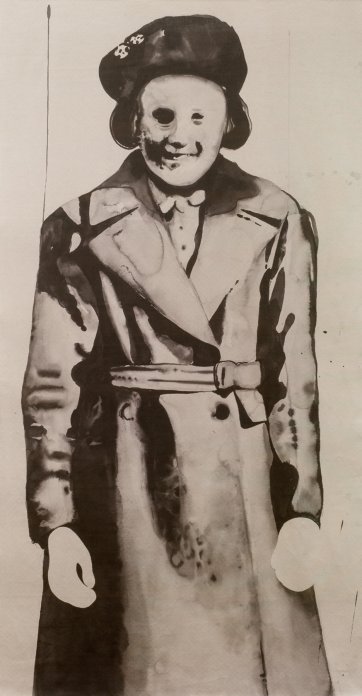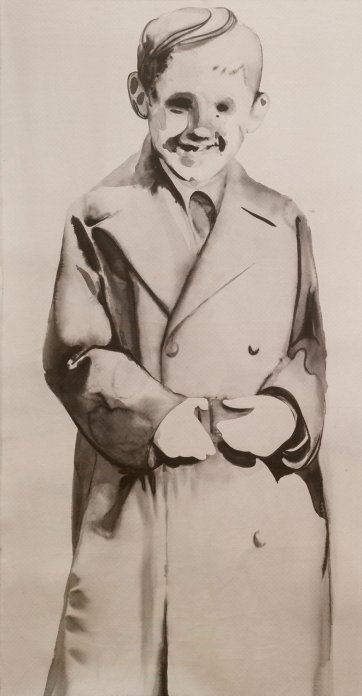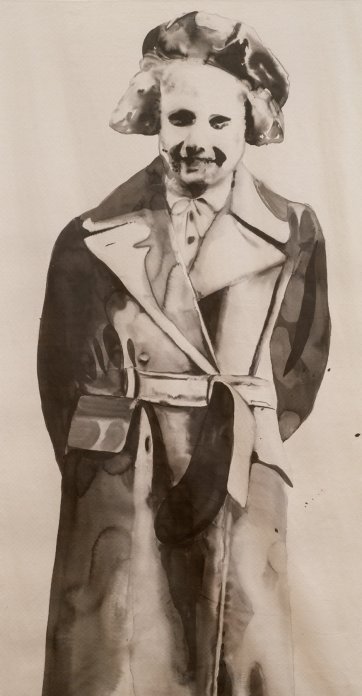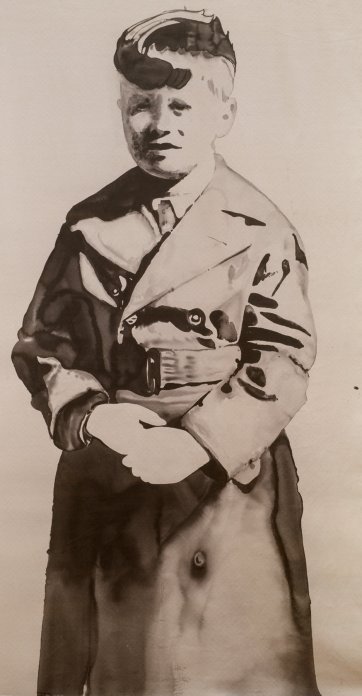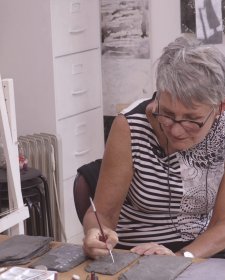Like it's so fast drying. You got to be in the zone. In the beginning I wanted to make work about Snowy Mountain's scheme. Suddenly these kids started to appearing in the research. And I think it's because a lot of the children actually shared a boat with the Snowy Mountain's scheme men who were on their way to Australia. I immediately like the images, I think they're just so powerful. They're just so jumped out at me. So then I thought, oh, maybe I should change what I'm working on. With the Snowy Mountain scheme, I was going to do oil paintings and sort of, you know how I set out. But as soon as I come across this subject, I just had instantly knew how I want them to look.
You know, you've got to work in the medium that you think the subject calls for, I think. So, and I immediately knew it's got to be in ink. And printed. There's five images. Actually going to be double this size so these are just works that I've made to make prints from, which will be on calico. I also wanted them to be larger than life so they're almost like poster children for the child migrant scheme. Which is also why they've got big grins and it's sort of about promotion, it's about the lies they were fed. I've been working in ink and watercolour for the past 20 years. What I've always done with ink and watercolour is to trust my own instincts and just make up my own rules, you need to stretch the paper, you know, there's all these rules that I kind of just threw out the window.
With ink and watercolour, it's all very in the moment, there's a lot of pressure. And also the way I paint, will often just throw a heap of water on it and go into that danger zone and not really sure what's going to happen, but that's sort of part of the fun. And you waste a lot of paper doing it, but you got to take risks. You can't be precious about your material, so you've got to always try and work with like an abundance kind of mindset, that you, I've got a never ending supply of paper, so it doesn't matter if I mess this up, I can just get a new one. And that, you know, kind of frees you up. You just can't think about how much the paper costs. You can't let it into your mind, or you're not going to make the best work that you can.
You need to make fast decisions, and you know, you make, you're a little bit reckless. Like there's lots of mistakes. Some you keep, some you try to get rid of. I'm working from tiny little pictures, so I'm really just focusing in on what is necessary, what information is necessary to bring him to life. So it's just being really selective. There's areas like down here that you sort of have to, I actually have to finish this now. Because if you, you can't just do a bit. Like it's, the ink's drying quite fast. You need to be on your toes. So I might, you know, move the paint, if I wanted there to be drips, like here. So I just sort of, actually that's an accident I decided to keep. But it's just about, you know, moving the paper around.
And when I'm working this big, I'll work in sections. So if I'm working on the head, then I'll, you know, I'll bring it, you know, down there and I'll sort of put it under the bench so I can comfortably work. It gets quite messy, but I decided to leave that in. You know, it's all part of the process. You're never going to get anything out of it if you don't challenge the work. Or let, even just let the work guide you. So like I'll often start out with an idea of how I want to go, but at the same time, I'm open for which way the work is sort of going to guide me. So you just sort of go with it. Yeah.

